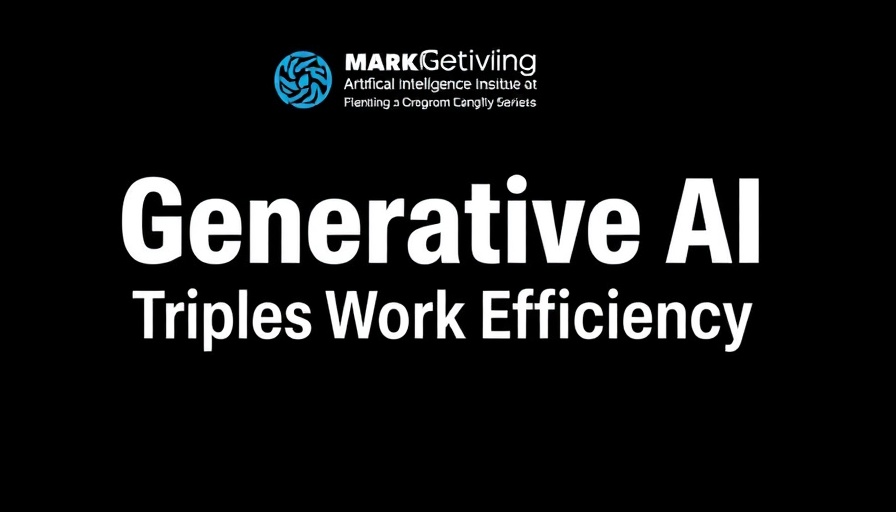
Generative AI: Transforming Efficiency in the Workplace
A recent groundbreaking study by Jonathan Hartley, in collaboration with various prestigious institutions, reveals that generative AI is not just a technological novelty; it's reshaping productivity norms in workplaces across the United States. Conducted by researchers from Stanford, George Mason, Columbia University, and the World Bank, this study surveyed over 4,000 U.S. workers, yielding significant insights into AI's rising prevalence and effectiveness in enhancing work efficiency.
The Surge of AI Adoption
As of December 2024, an impressive 30.1% of workers reported utilizing generative AI in their professional tasks. This marks a substantial increase from a couple of years ago when AI was often limited to niche applications. Industries stand out in their adoption rates, particularly in customer service, marketing, and IT, while more traditional sectors like agriculture and government lag.
The Efficiency Revolution
A striking revelation from the study is the dramatic decrease in task completion time brought about by generative AI. Tasks that used to consume around 90 minutes can now be accomplished in just 30 minutes, highlighting a threefold increase in efficiency. However, the integration of AI into the workweek is still limited; most workers employ these tools for less than 15 hours a week, indicating AI's role as a supportive tool rather than a comprehensive replacement.
AI's New Influence on Job Markets
The implications of generative AI extend beyond task management; over 50% of unemployed individuals seeking work in the past two years have utilized AI tools for resume creation, cover letter drafting, and interview preparation. This indicates a paradigm shift not just in undertaking tasks but in the employment landscape itself. AI is positioning itself as an essential partner in the job search process.
The Importance of Timely Data
This study's timing is crucial. Being one of the most current on AI's workplace impact, its findings offer an insightful snapshot of contemporary AI usage. Previous research relying on outdated data may underestimate the dynamics shaping today's workforce. The contrast between the reported 75% usage in earlier reports and this study's more modest figure underscores the need for a realistic perspective on AI’s reach.
Looking Ahead: The Future of Work with AI
While a threefold productivity increase is remarkable, experts like Roetzer emphasize that we are only beginning to explore the potential of generative AI in the workplace. As newer, more sophisticated AI models are developed, we may witness an expansion beyond the current 30.1% adoption rate, affecting task structures and potentially redefining job roles across various industries.
For C-level executives and marketing leaders, the message is clear: harnessing AI is not just an option—it has become a necessity. As generative AI continues to evolve, those who embrace this technology now are more likely to thrive amidst growing competition. It’s time to integrate AI into organizational strategies and leverage its full potential to drive efficiency and innovation.
Conclusion: Embracing the AI Driven Future
Generative AI is proving to be a transformative force, enhancing productivity and reshaping job functions. This call to action is directed toward decision-makers to adopt these powerful tools not simply as scientific curiosity, but as imperative components of modern business. As we stand on the brink of a new era characterized by AI integration into the workplace, adaptability could determine the future of industries worldwide.
 Add Row
Add Row  Add
Add 




Write A Comment